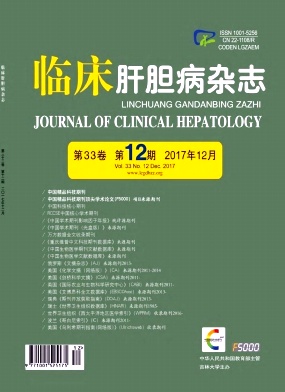|
[1]ZHU JB, HUANG S.Application of fusion imaging navjgation system in local ablation for liver cancer[J].Clin J Med offic, 44 (2) :213-215. (in Chinese) 朱金彪, 黄枢.融合成像导航系统在肝癌局部消融中的应用[J].临床军医杂志, 2016, 44 (2) :213-215.
|
|
[2]CUI RW, ZHU SG, FAN L, et al.Comparison of clinical efficacy between radiofrequency ablation and surgical resection for early hepatocellular carcinoma:a Meta-analysis[J/CD].Chin J Hepatic Surg:Electronic Edition, 2017, 6 (4) :280-284. (in Chinese) 崔瑞文, 朱曙光, 范磊, 等.射频消融与手术切除治疗早期肝细胞癌疗效比较Meta分析[J/CD].中华肝脏外科手术学电子杂志, 2017, 6 (4) :280-284.
|
|
[3]AHMED M, SOLBIATI L, BRACE CL, et al.Image-guided tumor ablation:standardization of terminology and reporting criteria---a 10-year update[J].Radiology, 2014, 273 (1) :241-260.
|
|
[4]SHIINA S, TATEISHI R, ARANO T, et al.Radiofrequency ablation for hepatocellular carcinoma:10-year outcome and prognostic factors[J].Am J Gastroenterol, 2012, 107 (4) :569-577.
|
|
[5]LIVRAGHI T, SOLBIATI L, MELONI MF, et al.Treatment of focal liver tumors with percutaneous radio-frequency ablation:complications encountered in a multicenter study[J].Radiology, 2003, 226 (2) :441-451.
|
|
[6] CHEN MH.Radiofrequency ablation in the treatment of liver cancer in the era of minimally invasive surgery[J].Chin J Dig Surg, 2009, 8 (1) :4-6. (in Chinese) 陈敏华.微创时代如何看待肝癌的射频治疗[J].中华消化外科杂志, 2009, 8 (1) :4-6.
|
|
[7]Interventional Group, Chinese Society of Radiology, Chinese Medical Association.Expert consensus on standard therapeutic procedures of percutaneous radiofrequency ablation for liver tumor[J].Chin J Radiol, 2012, 46 (7) :581-585. (in Chinese) 中华医学会放射学分会介入学组.经皮肝脏肿瘤射频消融治疗操作规范专家共识[J].中华放射学杂志, 2012, 46 (7) :581-585.
|
|
[8]ZHENG JS, LI JJ, CUI XW, et al.Therapeutic combination of hepatic arterial chemoembolization with CT-guided radiofrequency ablation for hepatocellular carcinoma:an analysis of curative effect[J].J Intervent Radiol, 2009, 5 (18) :324-327. (in Chinese) 郑加生, 李建军, 崔雄伟, 等.肝动脉化疗栓塞联合CT引导下射频消融术治疗肝癌的疗效分析[J].介入放射学杂志, 2009, 5 (18) :324-327.
|
|
[9]SHENG SP, ZHENG JS, CUI SC, et al.Clinical features and treatment of hemobilia associated with liver tumor ablation therapy[J].Chin J Interv Imaging Ther, 2016, 13 (1) :3-6. (in Chinese) 生守鹏, 郑加生, 崔石昌, 等.肝肿瘤消融相关胆道出血的临床表现及治疗[J].中国介入影像与治疗学, 2016, 13 (1) :3-6.
|
|
[10]Interventional Radiology Group, Editorial Board of Chinese Journal of Radiology, Chinese Medical Association.Regulations on standardization of interventional treatment of liver cancer (draft) [J].Chin J Radiol, 2001, 35 (12) :887-891. (in Chinese) 中华医学会中华放射学杂志编委会介入放射学组.肝癌介入治疗规范化条例 (草案) [J].中华放射学杂志, 2001, 35 (12) :887-891.
|
|
[11]ZHAO GS, XU K, LIANG SN, et al.Causes and prevention of serious complication after transcatheter arterial chemoembolization for primary hepatic carcinoma[J].J Intervent Radiol, 2008, 17 (11) :773-775. (in Chinese) 赵广生, 徐克, 梁松年, 等.原发性肝癌TACE术后严重并发症原因及预防[J].介入放射学杂志, 2008, 17 (11) :773-775.
|







 DownLoad:
DownLoad: